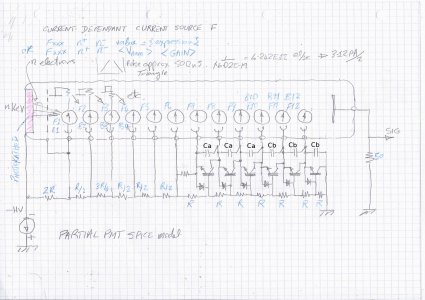- Joined
- May 27, 2016
- Messages
- 3,469
While you will most often see a shield connected to a circuit ground at one point only (if it's any good), it not being connected at all does not stop it acting as a Faraday shield, and many may be deliberately so, depending on all sorts of things.The copper foil is wrapped around the detector, and probably is used to stop alpha particles. I don't see an electrical connection to it, so it probably is not a shield to reduce electrical noise pickup.
Any external field cannot exist beyond the short circuit boundary condition of the copper. Inside that copper cover, they cannot exist, save for a small amount near the "entrance". The diode is the possible receiver of a multitude of high level RF, from Wi-Fi, phones, radar, everything. Distinguish between RF, once it has become propagating EM, (like light), and the real near field precursors (magnetic, and electric). The field from a power line is huge. Even the (50Hz) field from my house wiring is so strong it maxes the screen on my scope if I touch the end of a probe, and it won't go away entirely if I put my other hand on the scope chassis.
For some measurements, the only way to lose the unwanted noise is to use two probes, one subtracting in differential mode.
While I have not yet read up in detail, (and my "radiation lab experiments" budget got hijacked), I am considering one of these also. As I understand what was said before, this device responds to input energy in the X-Ray region directly, instead of needing a scintillator material to down-convert to visible light frequencies, and work like a regular photodiode.
From it's application description, it would seem to be used in "Geiger counter" mode. That concerns a little, because we want a preserved pulse maximum amplitude. Geiger counter pulse makers often use comparator thresholds, followed by lots of non-linear gain, to make the loud click pulse. Excellent that you have untangled it enough to check this out in simulation.
You are right about the "distractions". The next is accounts, and the (ugh!) paying of taxes. I have worked up a lot of aerobic digging under the tree stump interfering with my future shop hardstand. So far - about 30% of the big roots "disconnected". The darn thing (tree) still feels more solid than my left side lathe support block! It gives a negative blend to the phrase "My Lathe Rocks"!


